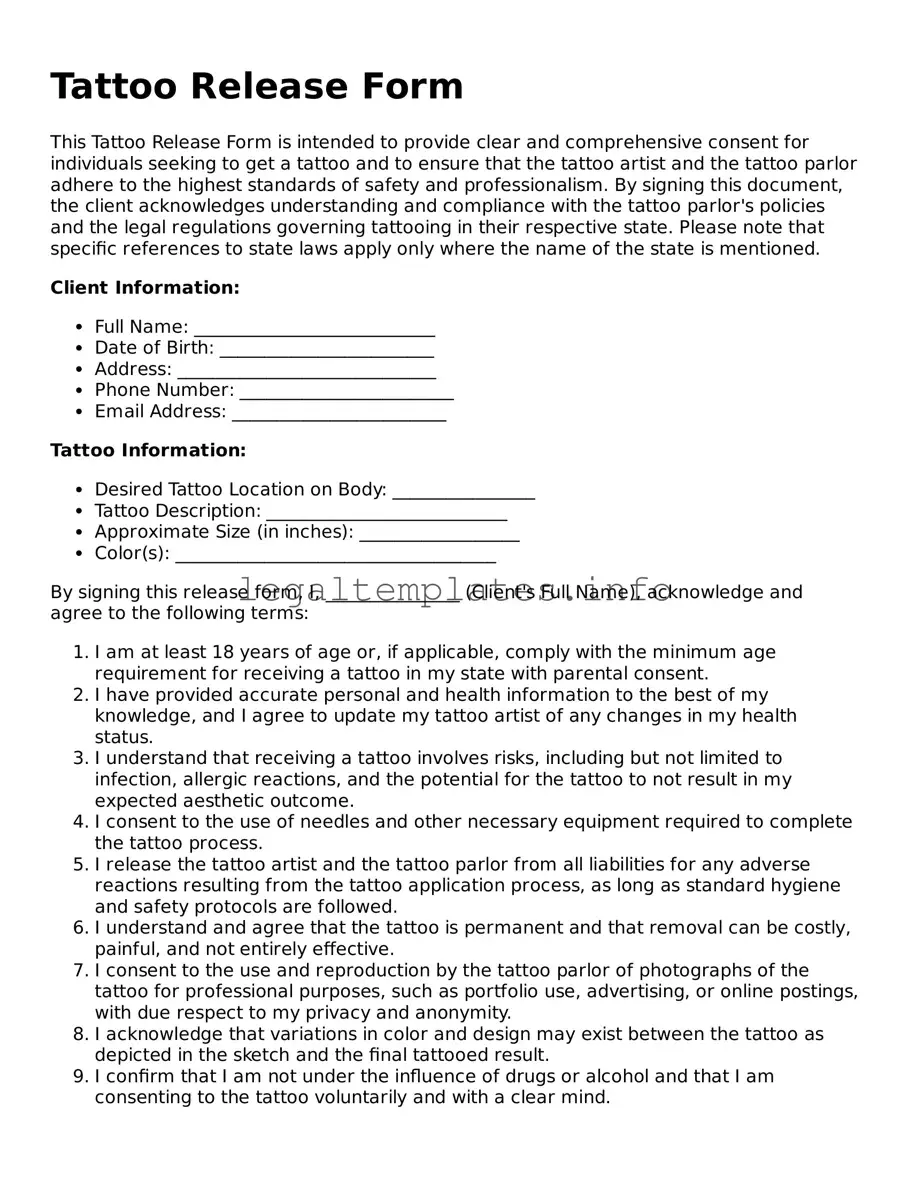What is a Tattoo Release form?
A Tattoo Release form is a document signed by a client before receiving a tattoo, acknowledging that they have been informed of the risks and procedures associated with getting a tattoo. It serves to protect the tattoo artist and the parlor from liability in the event of any complications or dissatisfaction with the tattoo.
Why do I need to sign a Tattoo Release form?
Signing a Tattoo Release form is a crucial step before getting a tattoo as it ensures that you are aware of and agree to accept the potential risks involved. It also confirms your consent for the artist to perform the tattoo procedure on you. This protects both you and the artist legally.
What information is typically included in a Tattoo Release form?
Typically, a Tattoo Release form will include your personal information (such as name and date of birth), contact details, identification of the tattoo being applied, an acknowledgment of the health risks involved, verification of your age, and a statement of consent. It may also include a clause about following aftercare instructions.
Is it mandatory for minors to have a Tattoo Release form signed by a parent or guardian?
Yes, in most places, if minors are legally allowed to get a tattoo, a Tattoo Release form must be signed by a parent or guardian. This is to ensure that the legal guardian consents to the procedure and acknowledges the risks involved. Check local laws, as regulations can vary.
What are the health risks mentioned in a Tattoo Release form?
The health risks outlined in a Tattoo Release form often include potential allergies to ink, infections from unsterilized equipment, and skin complications such as scarring. The form may also mention risks like bloodborne diseases if the equipment is not properly sanitized.
Can I change my mind after signing a Tattoo Release form?
Yes, you can always change your mind about getting a tattoo even after signing the Release form. However, depending on the shop's policy, you might not be refunded any deposit you've paid. It's best to be certain before signing the form and placing a deposit.
What happens if I don't follow the aftercare instructions provided by the tattoo artist?
If you don't follow the aftercare instructions and experience complications with your tattoo, it could affect your ability to seek legal remedy. The Release form often includes a clause that highlights the importance of aftercare for the healing process. Not following these instructions may be seen as negligence on your part.
Are there any reasons I might be refused a tattoo after signing the Release form?
Yes, a tattoo artist or parlor may refuse service for several reasons, including if you are under the influence of drugs or alcohol, displaying signs of skin diseases or infections, or if the artist is not comfortable with the requested design. Most reputable shops prioritize safety and ethical considerations above all.
Do I need to bring identification when signing a Tattoo Release form?
Yes, valid identification is usually required to verify your age and identity when signing a Tattoo Release form. This is a precaution to ensure the legality of the procedure, especially concerning age verification.
Can a Tattoo Release form be customized for each client?
While the core elements of a Tattoo Release form are standard, certain sections may be customized based on specific health conditions or concerns the client may have. It's important for both the client and the tattoo artist to discuss any unique circumstances before proceeding.
